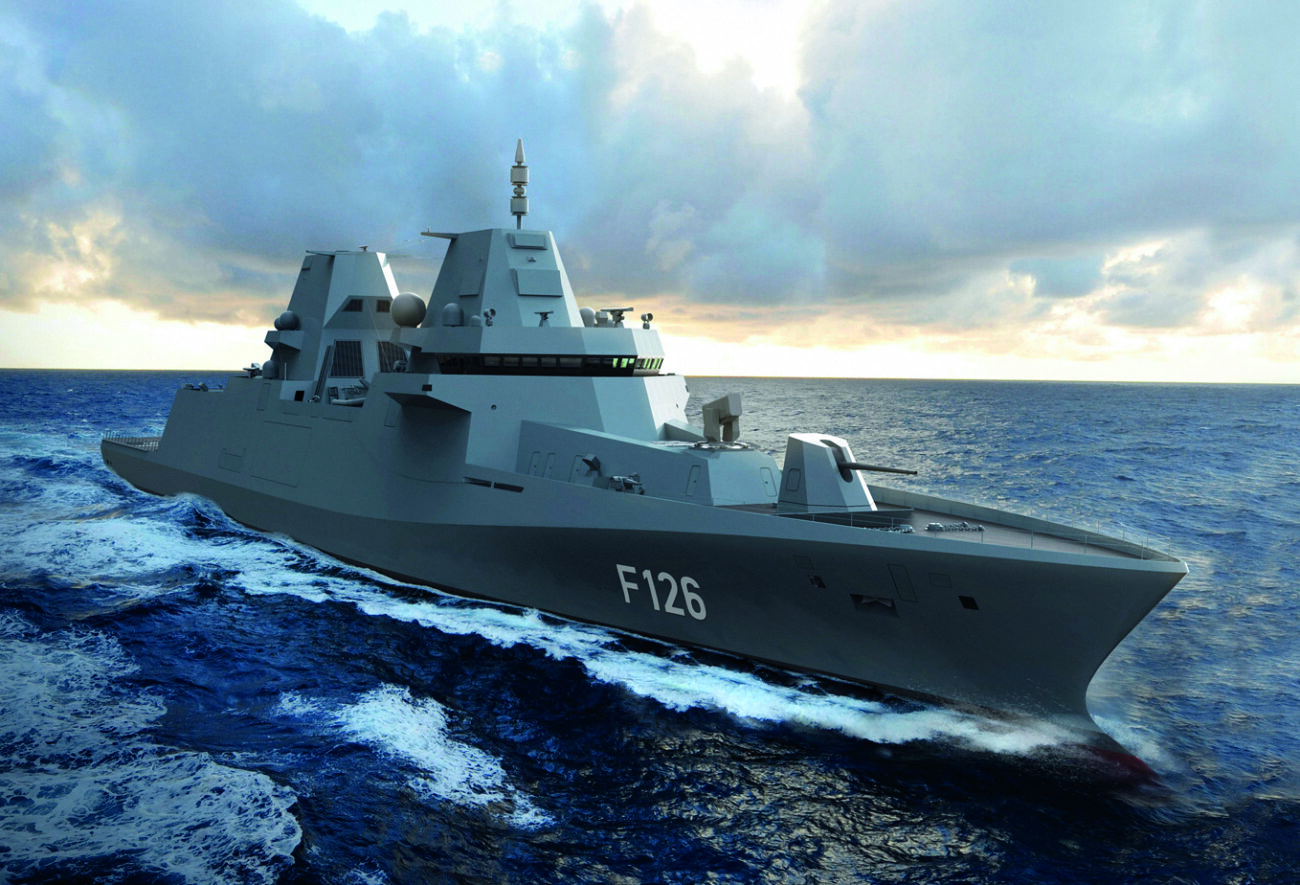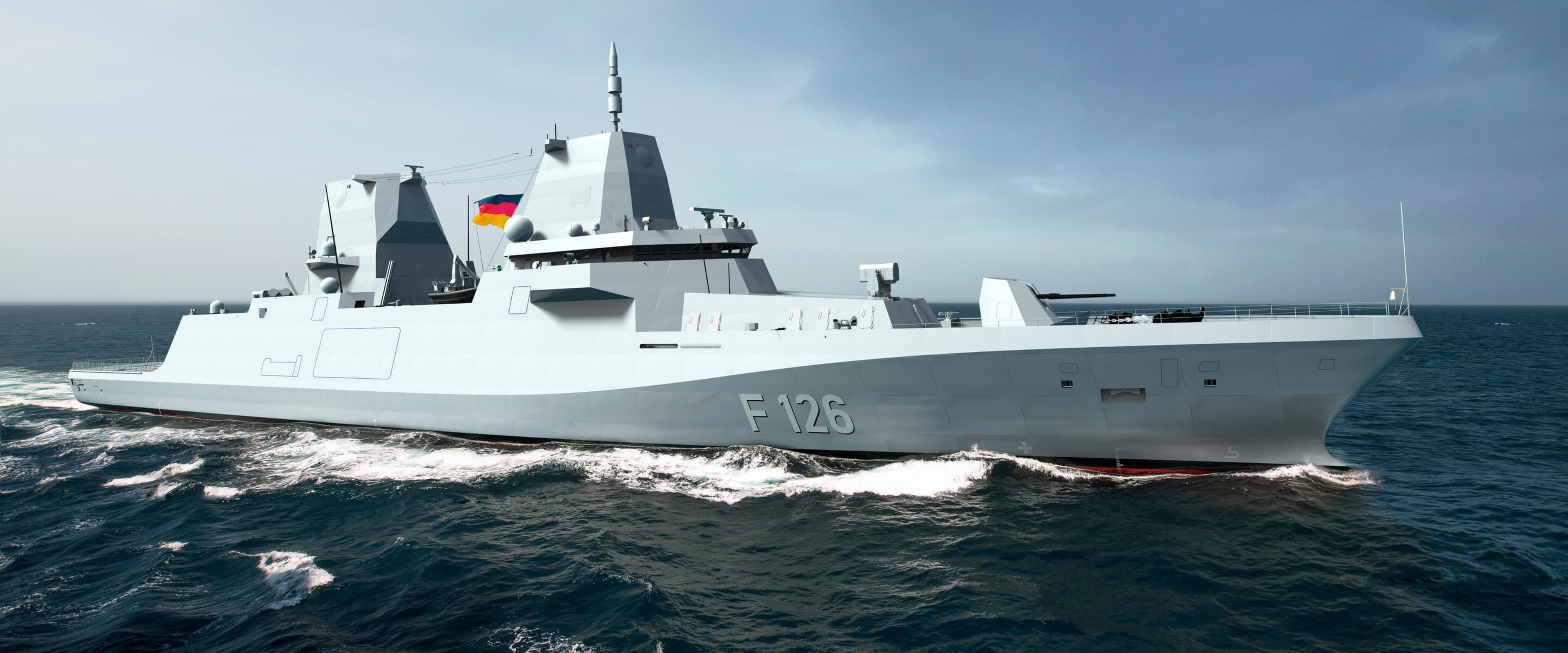A new chapter in the history of the German Navy has begun with Damen Shipyards Group cutting the first steel for the F126 frigates, which is anticipated to be the biggest ever warship that the navy has seen in several decades since World War 2.
German Bombers, UK Vessel, 1000+ US Causality: How Luftwaffe Fighter Pilots Wreaked Havoc On US-UK Forces In 1943
Damen Shipyards Group and NVL Group celebrated the official start of construction for the F126 frigates during an event held at the Peene shipyard in Wolgast, Germany.
On December 5, the first steel was cut according to schedule, marking a significant advancement in the F126 project—which is expected to grow into the biggest shipbuilding project in German Navy history.
The F126 project given to Damen Naval was launched in June 2020. It aims to construct four multifunctional frigates, with the option of two more later. The vessels have been designed by Damen Naval and its partners for the last three and a half years.
The F126 project is the “largest shipbuilding project in the history of the German Navy,” according to the manufacturer. These ships will be the largest surface combatants to serve in the German Navy since the Second World War in terms of size. The first of the four boats is likely to be delivered by 2028.
Damen at Blohm & Voss yard has cut first steel for future F126 frigates of German Navy. First hull to be commissioned 16 June 2028, second hull 15 March 2030, last two frigates 14 February & 17 December 2031.
We're clearly not in a hurry.https://t.co/A2jztxaazQ
— Alex Luck (@AlexLuck9) December 6, 2023
Damen Shipyards Group CEO Arnout Damen said that the F126 project is an important contribution to the technological sovereignty of the German, Dutch, and European defense industries. “The cooperation with our partners Blohm+Voss and Thales is excellent, and the project is now recognized worldwide as one of the most exciting frigate construction projects.”
With a displacement of more than 11,000 tonnes and a length of 545 feet, the F126 frigates will be the biggest in the German naval fleet. These multi-mission ships are expected to be the biggest asset to the German Navy in several years because they can operate anywhere in the world, from tropical climes to frigid locations.
“With the F126 frigates, the navy has a modern asset that, in the future, can serve as an effective deterrent and defense for our alliances and our security in all maritime operations and operational areas around the world,” stressed Parliamentary State Secretary Siemtje Möller MdB. The F126 frigates are a modern asset for the German Navy.
According to the plan, the whole construction of the ships will take place in German shipyards in Hamburg, Kiel, and Wolgast. The Peene shipyard in Wolgast, a part of the NVL Group, will handle the steelwork and pre-assembly for the stern.
Constructed in Kiel, the foreship will be assembled along with the stern before being towed to Blohm and Voss in Hamburg by sea. Blohm and Voss in Hamburg will handle the last outfitting, commissioning, testing, shipping, and on-board system outfitting.
Additionally, the warships are primarily meant to replace the German Navy’s present fleet of four frigates, the F123 Brandenburg class, which went into service in the mid-1990s. The archaic F123 vessels are outfitted with Saab RBS-15 Mk 3 anti-ship missiles to add teeth to their existing combat power. Initially meant for anti-submarine warfare, the vessel has received upgrades and life extensions since 2010.
This makes the replacement of these aging vessels even more significant, especially in the wake of the Russian invasion of Ukraine, which has caused a stir across Europe and forced European states to undertake an all-encompassing military modernization to cater to NATO’s security needs.
Since the invasion was launched, Germany’s defense posture has changed, and its defense budget expanded. Reluctant to buy more arms earlier, the country has now placed several orders, including for the fifth-generation F-35 fighter jet. The focus should now fall on the navy, according to experts who have observed that the overall effectiveness of the navy has been crumbling.
The F126 Ship Is Coming To Bolster German Navy
The F126 class was initially intended to be called the Mehrzweckkampfschiff (MKS 180, or Multi-Purpose Combat Ship 180), where the 180 denoted the crew complement that was eventually lowered.

From a design perspective, a minimal crew complement is still essential. Each vessel will now have a core crew of 114 people, who will rotate every four months. This will enable the ship to run constantly for up to two years, owing to a highly automated and low-maintenance architecture.
Depending on the particular requirements of the German Navy, the F126 frigates will be able to perform a wide range of tasks using mission modules. Damen claims these modules may be quickly switched out “without a lengthy commissioning period.”
Two F126 MM ASW modules are being supplied to the German Navy as part of an initial deal, and its intended function is to “conduct long-range ASW operations and to build up an extensive subsurface picture.” Moreover, Atlas Elektronik claims that these modules will contain the “latest active and passive sonar technology.”
Even in their most basic configuration, the warships can conduct anti-air warfare (AAW) and anti-surface warfare (ASuW), thanks to the Thales Tacticos battle management system connecting all the different sensors and weaponry.

There is no confirmation that SM-2 Standard Missiles will be included in an expanded anti-air warfare role. Still, weapons chosen for the F126 frigates will consist of a 16-cell Mk 41 vertical launch system (VLS) for up to 64 Evolved Sea Sparrow Missile (ESSM) Block 2 missiles.
Eight Kongsberg Naval Strike Missiles (NSM) launchers, two Rolling Airframe Missile (RAM) launchers for close-quarters defense, a 127mm main gun that fires Vulcano extended-range precision-guided projectiles, and two 27mm Rheinmetall MLG27-4.0 secondary cannons are also included in the F126 design. Additionally, a hangar is also provided for helicopters on the deck.
The German Navy had indicated in June 2022 that it would eventually like to see the option of two more F126 frigates to be removed, for a total of six. The plans were then announced to be placed on hold.
The F126 contract is expected to supply the German Navy with four ships between 2028 and 2031, while the remaining two may be added later due to political decisions.
- Contact the author at sakshi.tiwari9555 (at) gmail.com
- Follow EurAsian Times on Google News




